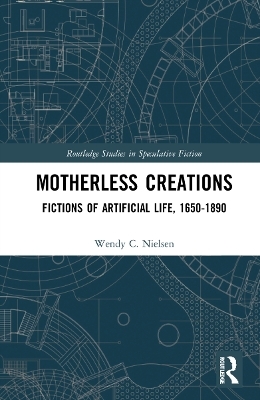
Motherless Creations
Routledge (Verlag)
978-1-032-26639-8 (ISBN)
Wendy C. Nielsen is Associate Professor of English at Montclair State University, USA. She has published the book Women Warriors in Romantic Drama and scholarly essays on world literature, Romantic-era automata, theater, the French Revolution, Jean-Jacques Rousseau, Olympe de Gouges, Johann Wolfgang von Goethe, Elizabeth Inchbald, Charlotte Corday, and Boadicea.
Introduction: Fictionality and Artificial Life
Part One, The Rationale for Creating Life without Mothers, 1650-1800
Chapter 1, Fables about the Birthing Body in the Long Eighteenth Century
Chapter 2, Automaton: The Analogy of ‘Man a Machine’ in Descartes and Obstetrics
Chapter 3, Pygmalion as Creator of Artificial Life
Part Two, Motherless Children in Literature of the Romantic Era, 1800-1832
Chapter 4, Homunculus and the Search for Immortality in Goethe’s Faust
Chapter 5, Olympia and the Romance Scam in Hoffmann’s The Sandman
Chapter 6, The Creature, his Companion, and the Singularity in Shelley’s Frankenstein
Chapter 7, The Golem: A Reflection on the Purpose of Artificial Life
Part Three, Making Artificial Slaves in French and American Literature, 1850-1890
Chapter 8, The Sex Bot Hadaly in Villiers’s Tomorrow’s Eve
Chapter 9, Constructing Identity through the "Iron Slave" in Melville’s The Bell-Tower
Chapter 10, White Supremacy in Ellis’s The Steam Man
Conclusion
Bibliography
Illustrations
| Erscheinungsdatum | 03.05.2022 |
|---|---|
| Reihe/Serie | Routledge Studies in Speculative Fiction |
| Zusatzinfo | 13 Halftones, black and white; 13 Illustrations, black and white |
| Verlagsort | London |
| Sprache | englisch |
| Maße | 152 x 229 mm |
| Gewicht | 485 g |
| Themenwelt | Literatur ► Fantasy / Science Fiction ► Fantasy |
| Literatur ► Fantasy / Science Fiction ► Science Fiction | |
| Geisteswissenschaften ► Geschichte | |
| Geisteswissenschaften ► Philosophie ► Philosophie des Mittelalters | |
| Geisteswissenschaften ► Sprach- / Literaturwissenschaft ► Anglistik / Amerikanistik | |
| Geisteswissenschaften ► Sprach- / Literaturwissenschaft ► Literaturwissenschaft | |
| Sozialwissenschaften ► Soziologie ► Gender Studies | |
| ISBN-10 | 1-032-26639-2 / 1032266392 |
| ISBN-13 | 978-1-032-26639-8 / 9781032266398 |
| Zustand | Neuware |
| Haben Sie eine Frage zum Produkt? |
aus dem Bereich


